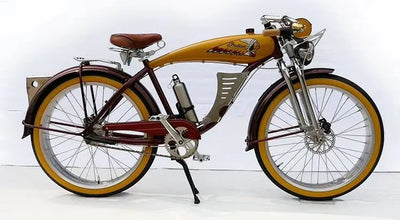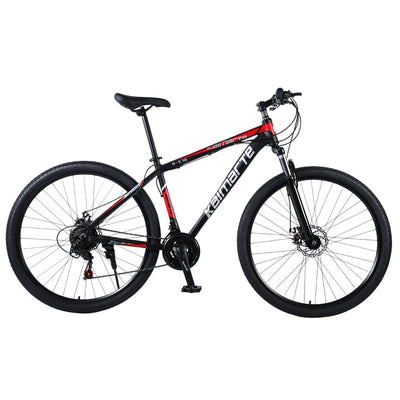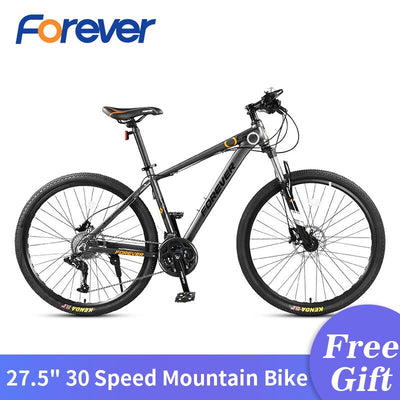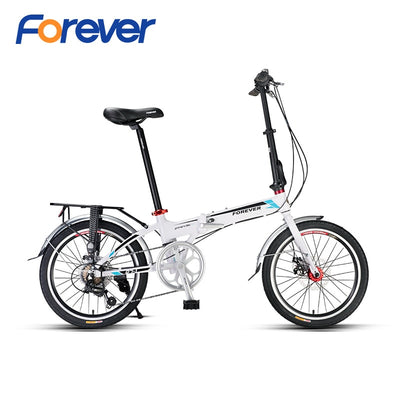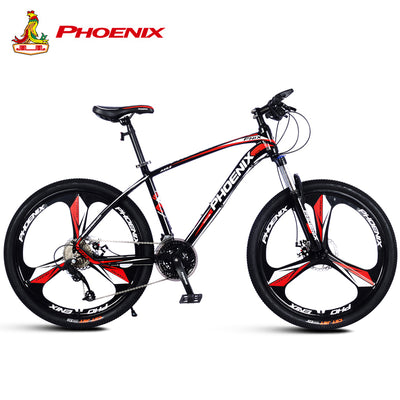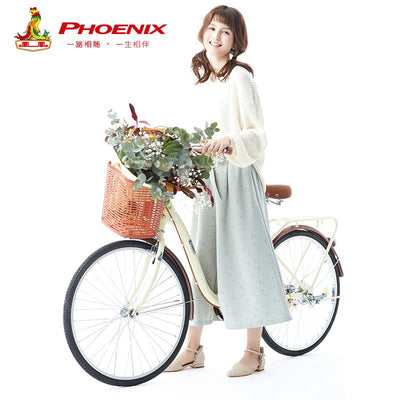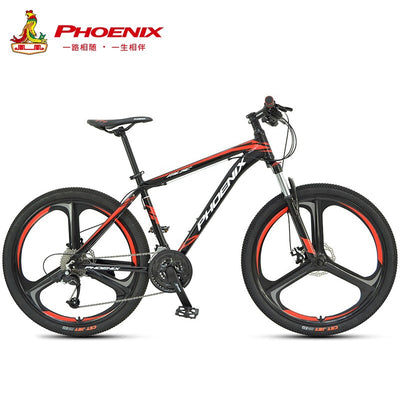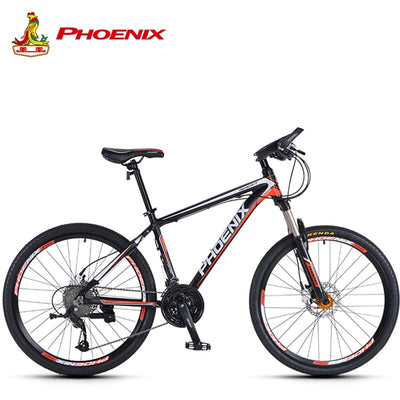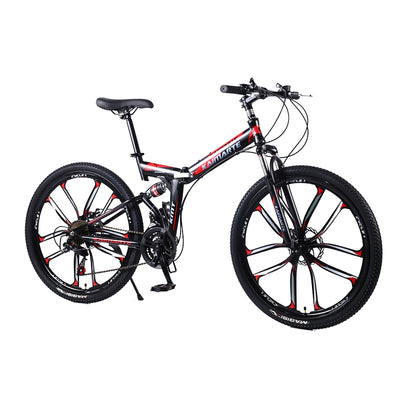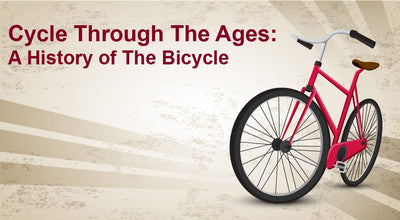Ultimate Guide to Bicycle Types
Posted by Tom Lee on
In the cycling community, one size cannot fit all. Nor can one bicycle type accommodate every cyclist out there.
When you are looking to buy a bicycle that will be your best companion on the road all the way to the finish line, it is imperative to select one that best answers your personal needs and has what it takes to conquer the challenges that await you.
Furthermore, making the right choice can greatly benefit your strength and overall health. A wrong bike will not only restrain you from exploring new worlds but can make you extremely dissatisfied, lead to discomfort or maybe even an injury over time. Your final choice will depend on a variety of factors: bicycle type specifications, price point, accessories, but also cyclists goals, body type and riding style.
Top industry manufacturers design each model with a purpose in mind. This means that a leisure bicycle cannot pose as a substitute for a mountain one since it will be unable to deliver the same performance level.
The following segment will include all main bicycle types, their pros and cons, and will cover the most important cycling tips regarding your final purchasing decision.
MOUNTAIN BIKES
.jpg)
Mountain bikes are ideal for cyclists who are riding on uneven surfaces and, of course, in mountainous regions. The type of suspension is one of the key attributes that should be considered when deciding which are good cycles for specific types of terrains:
- Hardtail mountain bikes - Come with front suspension and many gears, which makes them light and fast on uphills and flat ground. On technical descents, these bikes can be difficult to follow other riders on Dual Suspension mountain bikes.
- Full suspension mountain bikes - Designed with suspension on both front and back wheel, making them ideal on mountain bike trails. Unfortunately due to the extra weight, they can be harder to cycle uphill, and because of heavy gears, you can spin out at higher speeds if you are not careful.
When it comes to speeds, mountain bikes can be quite versatile, and your choice should be made based on the type of terrain and rider level: for steep hills, you’ll be better off with a bike with multiple chainrings up front; for technical tracks, a bike will less gears, ie. only one gear at the front, is easier to manage gears and should provide a great range to allow you to cycle steep uphills.
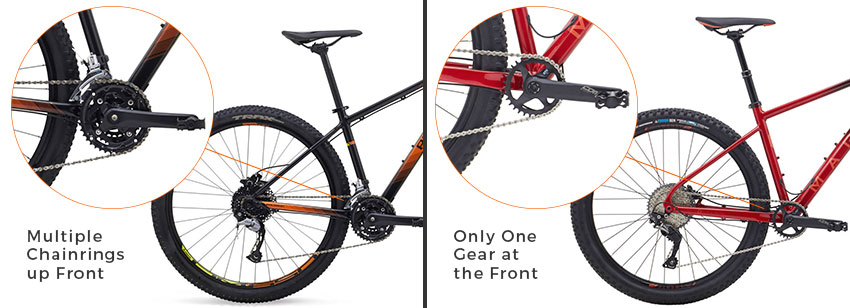
Mountain brakes are designed with disk brakes that come in two versions: Hydraulic, which enable stronger breaking with less effort, and mechanical brakes, which require manual adjusting over time. Only some entry-level mountain bikes come with rim brakes, which showed to be less effective in muddy and wet conditions.
Cyclist type:
-
Level: Beginner to Advanced
-
Riding distance: Short to Medium
-
Speed: Low to high
-
Goal: Exercise and fun
-
Track: Mountainous terrains
Mountain Bike Features:
-
Handlebars: Wide
-
Tyres: Thick, usually from 2.1 to 2.6 inches
-
Speed: From single speed to 30 or more gears
-
Frames: Aluminium, steel, titanium or carbon fiber
-
Brakes: Hydraulic Disk brakes, mechanical disc brakes on entry level
Following are the most popular types of mountain bikes:
Trail Bike
By far the most popular type of mountain bike. Trail bikes are a great option for a variety of roads, from dirt to single track trails. They will be your best partner for uneven rides downhill, filled with rock gardens, jumps and drops.
They come with heavier forks that allow for more steering precision. Their tyres are thicker than on other mountain bikes and have a more aggressive traction profile.
Cross-country
Cross-country bikes are ideal for both short and long rides, on trails that range from fire roads to technical singletracks. They can withstand rockier hills, occasional rock drops and jumps. Cross-country usually come with narrower tyres in comparison to trail bikes, as well as larger wheels, what makes them faster. Finally, they are known to be rather lightweight, as such easy to manoeuvre, especially when cycling uphill.
Dirt Jump
Dirt jump bikes are often referred to as urban mountain bikes, as the majority of enthusiasts tend to ride them in the city streets and bike/skate parks. They are designed with suspension in the front, commonly with single speed gears and only one brake. In its design, you’ll notice that they have quite large handlebars, but small frames. The saddle is positioned low, which means the cyclist rides mostly standing up.
All this makes them perfect for stunt-performers who have no fear of testing new acrobatic tricks.
Slopestyle
Slopestyle bike is for dirt bikers who want to jump higher, maximize their airtime, and generally speaking - perform certain aerial tricks that are impossible with dirt jump bikes. If you’re thinking about buying a bicycle that would provide such freedom of acrobatics, check out a more detailed article on what is a slopestyle bike which we have already published.
ROAD BIKES
Road bikes represent one of the fastest types out there. As such, they are adequate for adventurous and experienced cyclists who mostly ride on paved roads. They are designed to provide an aerodynamic ride, which means a cyclist is leaned forward during the ride.
Road bicycles come as both drop bar road bikes and flatbar/commuter road bikes.
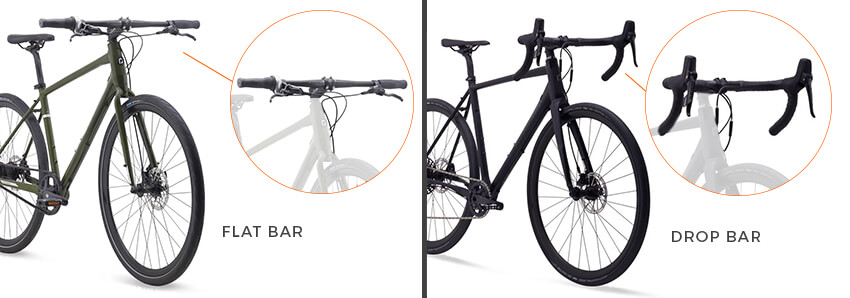
The difference is mostly in a rider’s preference: the flat bar is more popular with cyclists who are looking for a convenient transportation device to run errands around the town and commute to work, while a drop bar will provide greater comfort and efficiency for longer rides.
Road bike frames are made from aluminium or carbon fiber due to their lightweight, which allows a cyclist to easily reach high speeds. Titanium frames aren’t as popular due to their higher price tag.
The tyres are pumped with higher air pressure, making these bikes uncomfortable for beginner riders.

Sports saddles are as narrow as the rider’s sit bones and are often designed with a grove in the middle of the seat to provide better comfort. They are tilted forward so that a rider can lean forward and create better aerodynamics. Sports saddles have less cushion than the ones designed for cruiser bikes.
.jpg)
Road bikes start with 16 speeds and go up to 22 speeds, enabling riders to go extremely fast.
Cyclist type:
-
Level: Beginner to Advanced
-
Riding distance: Long
-
Speed: High
-
Goal: Mostly exercise and sports
-
Track: Paved roads
Road Bike Features:
-
Handlebars: Drop Handlebars
-
Seat: Narrow, sports saddle or racing saddle
-
Tyres: Smooth and narrow (around 0.98 inches in width)
-
Speed: 16 to 22 speed
-
Frames: Aluminium or Carbon fibre
-
Brakes: Rim Brakes or Disc Brakes on some bikes
Gravel bike
Gravel bike is a type of a road bike that can be called a middle ground between a road and a mountain bike. It is a by-product of highly popular gravel road races which combine a variety of riding surfaces, from gravel and asphalt to dirt. While at first glance these machines may not seem that different from any other average road bike, minimal design upgrades made gravel the most popular bicycle type on the market today.
It is more durable than a typical road bike and at the same time faster than a mountain one. It is an ideal option for cyclists who ride both on and off-road. What cyclists appreciate about a gravel bike design is the fact that wider tyres are fitted, making these bikes a lot more comfortable than road bikes and nearly as fast.
Tyres on are slightly bigger than average, usually between 1.26/1.38 to 1.73 inches in width (on some models width can even go up to 55 mm). They are designed in such way to provide comfort on bumpy tracks and to increase grip.
They come with hydraulic discs brakes that enable riders to deal with wet and muddy terrains. They produce greater stopping power and modulation in comparison to the rim brakes installed on the majority of road bikes.
All in all, gravel bikes are said to be extremely stable and comfortable on unpredictable surfaces, due to their longer wheelbases and slightly lower bottom bracket. The cyclist is in a more upright position, that way experiencing greater comfort when riding longer distances. Its wider tyres will produce extra resistance on the road as opposed to a regular road bike, but will still deliver optimal performance.
BMX BICYCLE
.jpg)
BMX stands for Bicycle Motocross, and can be characterised as an off-road bicycle, smaller and lighter than both road and mountain bike. It was initially built for riding on dirt and is especially good for racing.
While racing was its primary purpose, from this type of bicycle spawned several models of BMX bikes depending on the type of terrain they are intended for:
-
Flatland BMX for flat surfaces
-
Street BMX for urban surroundings and commuting in the city
-
BMX for park riding, built for skateparks
-
BMX for dirt riding, on jump tracks and dirt race tracks
BMX bicycles can also be further subdivided into several categories based on a rider’s skill:
-
BMX for a young rider, a bicycle small in size with smaller wheels, designed to provide stability for a newbie cyclist;
-
BMX for entry level riders, built with standard 20-inch wheels, which also offers support to first-time purchasers;
-
Mid-level BMX that is usually lighter and stronger than an entry-level one;
-
Professional BMX, which is completely customisable.
Naturally, BMX size, weight, wheels, tyres and other design specifics differ from one model to the other, specially built to serve a specific type of a cyclist.
BEACH CRUISER
Sometimes referred to as a cruiser, this bicycle type is built for riding on paved roads, with comfort and stability in mind. Due to their rather simple design, they are considered to be highly affordable in comparison to other bicycles.
Frames on a cheaper beach cruiser bikes are usually made from steel. Aluminium bike frames are lighter and normally used in more expensive cruisers One of the greatest cycling tips a beginner can get is to look for a bike that comes with thicker tyres, as they contribute to a greater stability, especially at lower speeds.
Cruiser saddles are extremely comfortable, support rider’s weight and support an upright sitting position.
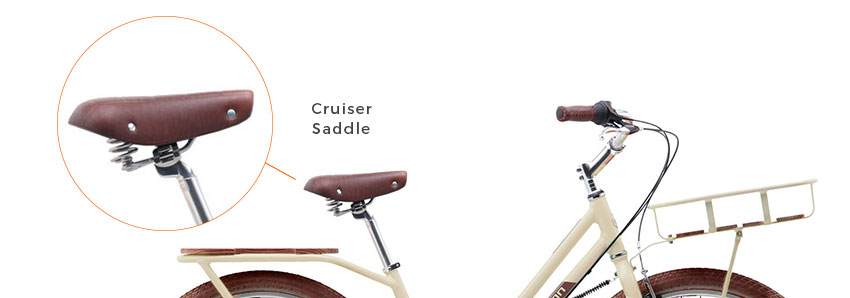
When it comes to speeds, on the single-speed bicycles the momentum comes from the rider when they are pushing the pedals. This makes single-speeds inadequate for high speeds and non-flat terrains. Three-speed bikes are better for people who commonly ride on hills.
Some single-speed cruiser bikes come with coaster brakes which allow you to stop the bike by pedalling backwards. They can also be included with hand brakes, in combination with coaster ones on the same bicycle.
Cyclist type:
-
Level: Beginner
-
Riding distance: Short
-
Speed: Slow
-
Goal: Leisure riding, communities
-
Track: Paved roads
Cruiser Bike Features:
-
Handlebars: Upright
-
Seat: Position is lowered relative to handlebars
-
Tyres: “Balloon tyres”, i.e. wide tyres which provide greater traction
-
Speed: Single speed (sometimes 3-speed models can be found)
-
Frames: Steel or aluminium
-
Brakes: Handbrakes, coaster brakes, or both
TANDEM BIKES
Tandem bicycle is a specific type of a cruiser which is designed to be ridden by more than one person. Not only are they fun for explorers who always look for one more person to experience the journey with, they can be quite fast.
The front rider is responsible for controlling the bike, braking, changing gears and steering, but they still require a great effort from the rear rider to maintain the balance.
When deciding on the best one for you and your partner, it is imperative that you size it right - the front rider should take the same position as they would on a traditional cruiser. If it fits them, the person on the back will take advantage of the adjustable stem to put themselves in the most comfortable position.
HYBRID
As their name suggests, hybrid bicycles represent a heavenly combination of a mountain bike and a road bike.
They have road bike size wheels with mountain bike gears, plenty of gears to climb hills and ride around town. With a hybrid bike, the cyclist is able to get a bike that will provide a smooth commute to work but will also be used for fitness training.
The material used for the frames will depend on the manufacturer and specific model - mostly aluminum; seats as well can be both standard or sports saddles; tyres can go from very thin to thick, and it is up to a buyer to decide whether they prefer balance and comfort over speed.
In terms of speeds, hybrid bikes go from three to 30 gears. Note that a number of commuters report they prefer more speeds to keep up with the traffic.
Cyclist type:
-
Level: Beginner and advanced
-
Riding distance: Short and long
-
Speed: Medium to high
-
Goal: Leisure ride, commute, and light exercise
-
Track: Paved roads and gravel roads
Hybrid Bike Features:
-
Handlebars: Upright
-
Seat: Can come with sports saddles, depends on the model
-
Tyres: Slightly wider than road bikes (anywhere between 28 and 50 mm)
-
Speed: From 3 to 30 gears
-
Frames: Aluminium
-
Brakes: Hand brakes
On the hunt to get a good bicycle? With us you can find a large variety of types and models, just be sure you set your cycling goal and define your new bikes’ purpose.
If you’re still unsure of your exact needs, feel free to get in touch - we’re more than happy to advise you!

.jpg)
.jpg)




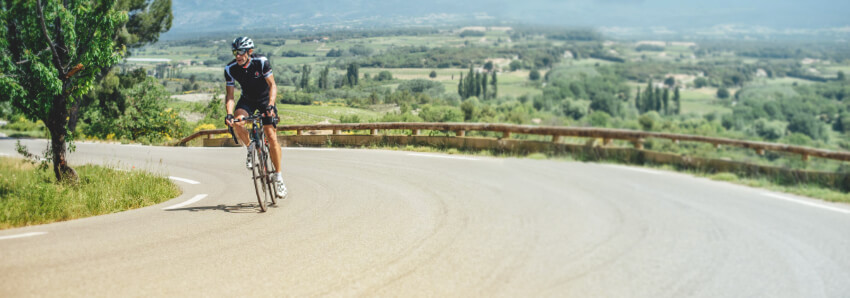

.jpg)
.jpg)
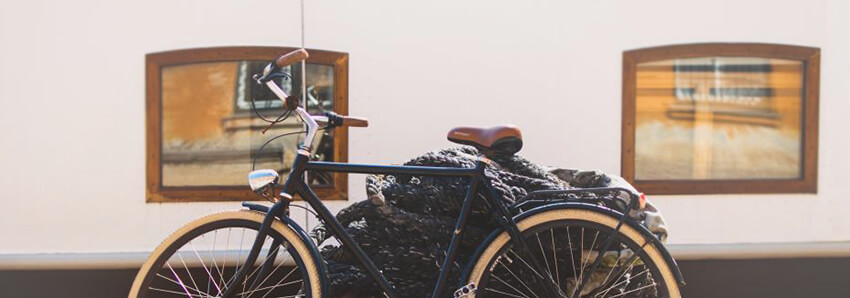
.jpg)

.jpg)
